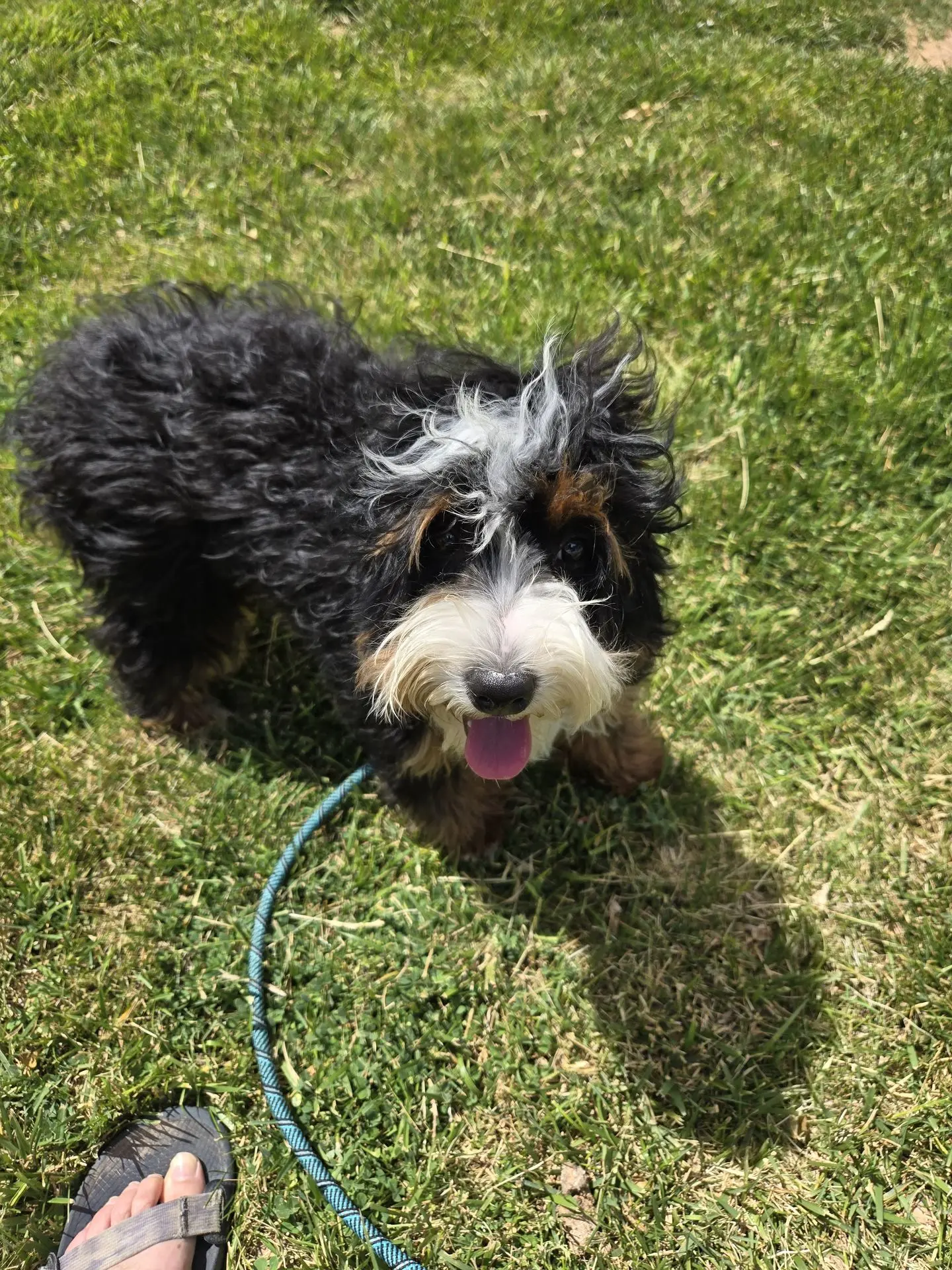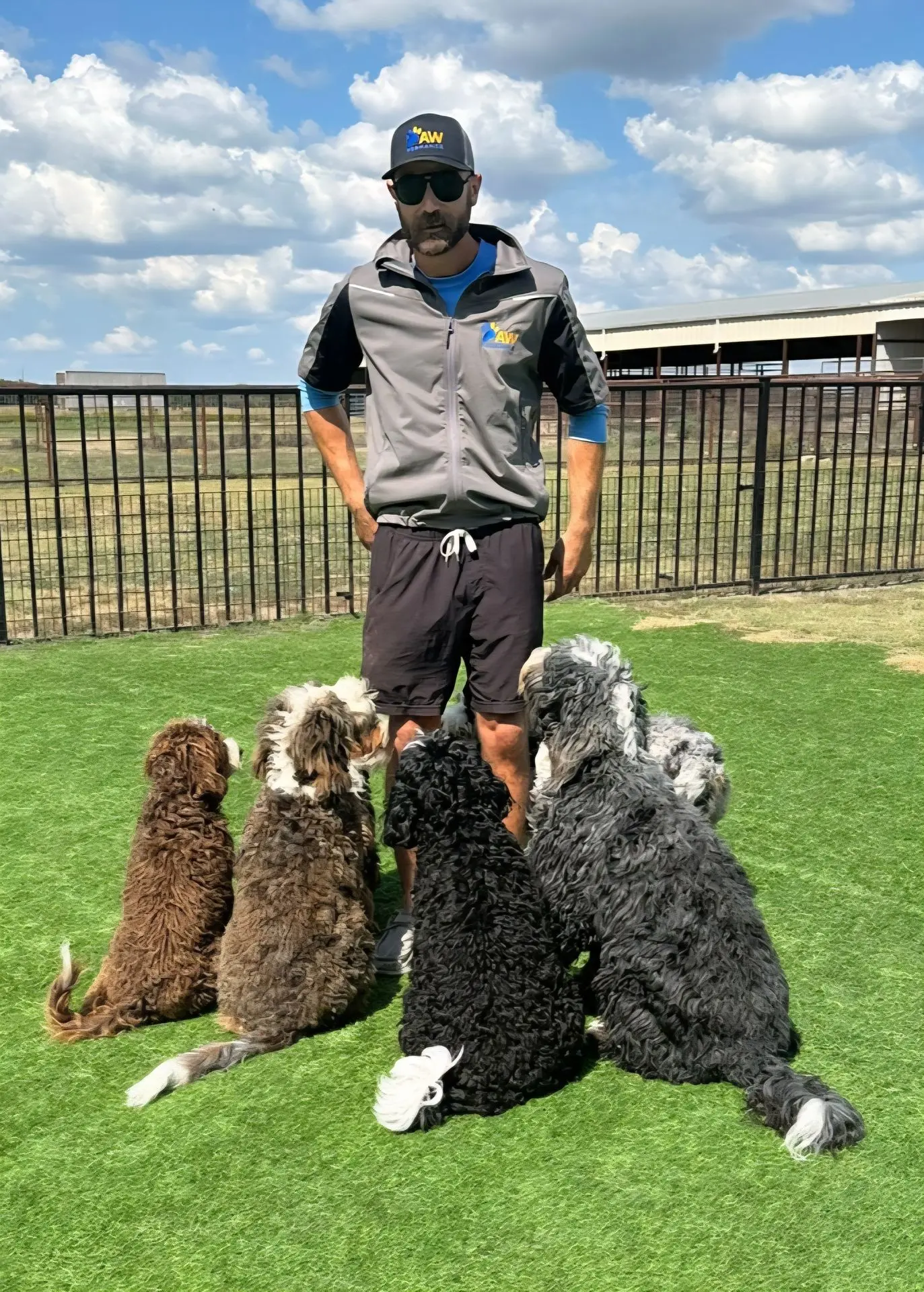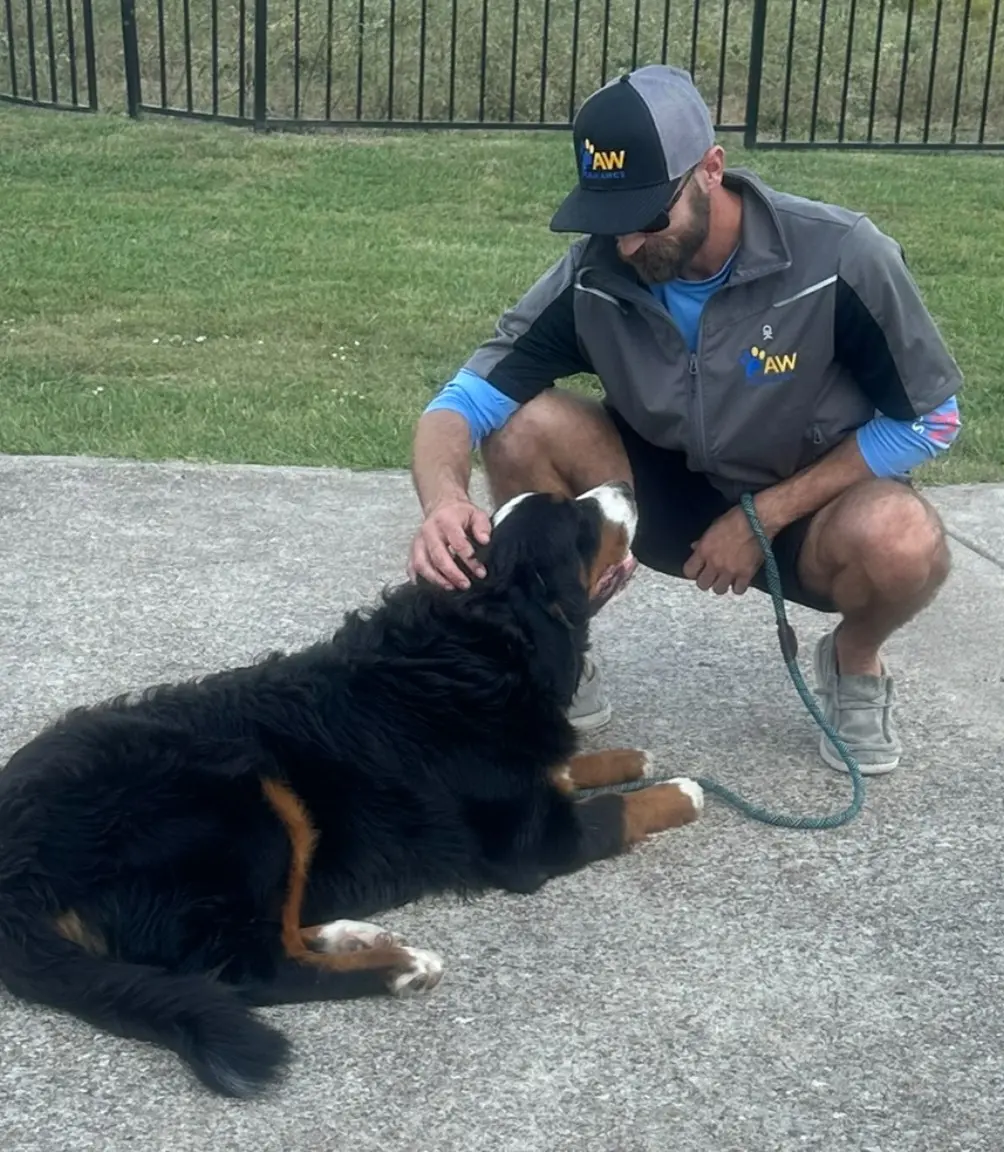What Is the Canine Good Citizen Program?
The AKC Canine Good Citizen (CGC) program is the national gold standard for polite, well-mannered family dogs. It’s recognized by trainers, landlords, insurance companies, therapy dog organizations, and working-dog programs as a trusted measure of real-world behavior.
A CGC-trained dog isn’t “perfect.” They’re reliable. Predictable. Safe.
They handle everyday life—visitors, walks in public, handling, noises, crowds—with confidence instead of chaos.
For many dogs, CGC is the first major milestone toward:
• Therapy dog work
• Service dog foundations
• Breed club titles
• Better access to rental housing
• Lower insurance restrictions
• A calmer home life
• Being a dog you can take anywhere
And the best part? Any dog can do it with the right structure and coaching. Because CGC is part of AKC dog training standards, the skills transfer directly into therapy dog prep, obedience, and community canine titles.

Pawformance (CGC) Training in North Texas
This program breaks down every CGC skill into simple, repeatable steps so owners know exactly what to practice, how often, and how to progress. My CGC training in Texas focuses on real-world skills families actually need, from loose leash walking to distraction-proof recalls.
Training Schedule (6–8 Weeks)
• 2–3 short sessions per day (3–5 minutes each)
• 1 weekly field trip to generalize skills

CGC Skill-by-Skill Training Guide
1. Accepting a Friendly Stranger
Goal: Dog remains calm while a stranger approaches and speaks to the handler. This part of CGC is one of the foundations of calm dog manners training and sets the tone for polite greetings.
How to Train
Practice neutral greetings at home first.
Reward the dog for staying still, keeping four paws on the ground, and not leaning/pulling.
Add small distractions (hat, backpack, different voices).
Homework: 3–5 practice reps daily with different people.
2. Sitting Politely for Petting
Goal: Dog sits or stands calmly while a stranger pets them.
How to Train
Start at home: handler pets → reward calm.
Add a friend: friend approaches, handler cues sit → pet briefly → reward.
Use “chin rest” or “watch me” to anchor attention.
Homework: 2–3 guest practice sessions per week.
3. Appearance & Grooming
Goal: Dog allows brushing, touching ears, and handling of front feet.
How to Train
Break it into micro-steps.
Touch ear → treat.
Lift paw → treat.
Brush two seconds → treat.
Homework: Daily 1–2 minute grooming drills.
4. Out for a Walk (Loose Leash Walking)
Goal: Dog walks on a loose leash with handler guidance.
How to Train
Start indoors with zero distractions.
Reward any slack in the leash.
Use “With Me” or your pattern turns to reset focus.
Increase distractions slowly.
Homework: 5–10 minute daily walks focused only on LLW.
5. Walking Through a Crowd
Goal: Dog stays controlled while passing people.
How to Train
Practice weaving between objects first.
Add low-distraction people.
Reward orientation to handler, not crowd.
Homework: Weekly field trip to a calm public space.
6. Sit, Down, and Stay in Place
Goal: Dog performs sit, down, and stays while handler walks away.
How to Train
Teach sit/down with luring → fade to verbal cues.
Stay: 1 step away → reward → gradually increase to 20 ft.
Keep stays short and successful.
Homework: Daily stay practice (1–3 minutes total).
7. Coming When Called
Goal: Dog comes happily when handler calls.
How to Train
Start indoors, short distance: “Name → come!” → jackpot reward.
Add 20-ft long line.
Never call the dog to do something they dislike at this stage.
Homework: 10 recall reps daily.
8. Reaction to Another Dog
Goal: Dog remains neutral while another dog/handler team greets and passes. If your dog struggles with overexcitement or reactivity, this portion of the CGC evaluation overlaps heavily with structured dog reactivity training.
How to Train
Practice “look at that” from distance.
Reward calm watching or ignoring.
Gradually decrease distance over sessions.
Homework: 1–2 practice setups weekly with a neutral dog.
9. Reaction to Distractions
Goal: Dog stays calm around sudden noises, objects, or movement.
How to Train
Start mild:
Dropped keys
Walking past a bag
Sudden arm movement
Reward calm curiosity or neutrality.
Increase difficulty:
Dropping a chair
Walking past rolling objects
Person with walker or crutches
Homework: Short daily exposure drills to new stimuli.
10. Supervised Separation
Goal: Dog stays calm when the handler hands them to a stranger and leaves for 3 minutes.
How to Train
Start with 2–3 seconds with another person holding the leash.
Add distance linearly: 3 feet → 6 feet → door exit.
Keep voice and behavior neutral.
Homework: 1–2 reps daily of 10–30 second separations.

General Homework Plan for Owners
Daily: 3–5 short sessions (3 minutes each).
Weekly: One real world field trip (pet-friendly store, park, quiet plaza).
Always: Reward calm, controlled behavior. Avoid practicing sloppy reps.
CGC training improves not only your dog’s behavior but also your dog handler skills — timing, communication, and consistent cues.
CGC Test Prep Checklist
Your dog should arrive on test day able to:
✔ Walk on a loose leash with minimal cues
✔ Sit for greetings
✔ Be touched by a stranger
✔ Allow light grooming handling
✔ Stay 20 ft while you walk away
✔ Come when called reliably
✔ Ignore neutral dogs
✔ Recover quickly from distractions
✔ Tolerate brief separation
✔ Show no aggression or extreme fear
These are the skills your dog must reliably perform to pass the CGC test with confidence.

Why Train for CGC With Pawformance?
Anyone can “practice skills.”
Pawformance helps you actually pass the test and build a dog you’re proud to take anywhere. As a certified CGC evaluator in Texas, I guide you through each step and conduct the official test once your dog is ready.
With me, you get:
🔥 Step-by-step coaching tailored to your dog’s behavior
🔥 Structured weekly homework
🔥 Real-world practice setups
🔥 Neutral test dogs for practice
🔥 Access to a certified evaluator
🔥 A customized plan after passing CGC (Urban CGC, Community Canine, Therapy Dog prep, or advanced obedience)
Whether you're starting from scratch or refining final touches, I make CGC training doable, clear, and fun. I work with families across the Texoma area and also provide dog training in DFW for owners needing CGC preparation or help with everyday manners.
Ready to get your dog CGC-ready?
Book your CGC Assessment Call and let’s build a plan.